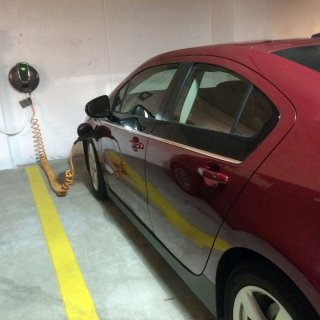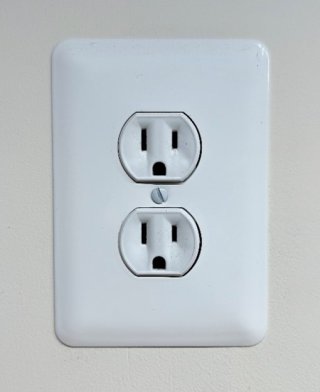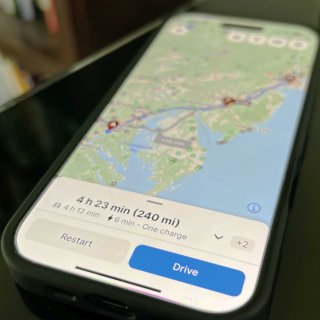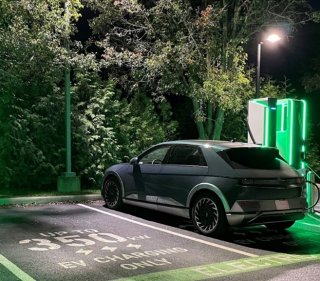Watt's Important? Seven Tips Every EV Driver Should Know!
Top 7 EV Tips
Check out seven essential insights into electric vehicle (EV) charging options and tips to maximize your driving experience. Whether you're considering making the switch or looking to enhance your knowledge, we've got you covered!
Tip #1: Owning an EV is the most seamless when you can charge where you live, work, or spend most of your time already.

Vehicles spend 95% of the time parked* so while Level 1 and 2 charging may take hours, your vehicle is likely to be parked that long anyway. Plugging in takes less than a minute and you can come back to a recharged vehicle later. Whether it’s when you wake up in the morning or when you finish your workday—you’ll rarely need to go anywhere else to refuel.
Tip #2: Charging at home or work doesn’t always require installing anything new.

If you can park near a regular household outlet—the same kind you use to plug in a lamp or coffee maker—you can often get by using the Level 1 charging cable that comes with many EVs. Overnight, this simple setup can add around 25–40 miles of driving range, which covers most people's daily commutes.† Yep, it's just like how you plug in your cell phone at night, but for your car. This approach also works great for PHEVs since they have shorter electric ranges. Try out our Home Charging Calculator to see if the outlets you already have might meet your charging needs.
Tip #3: Before you charge up in public, download a few apps to make plugging in quick and easy.

You may not even notice public chargers until you drive an EV but you can use tools like Department of Energy Alternative Fueling Station Locator or PlugShare to find them. With around 75,000 public charging stations across the country, and more coming online all the time, you may be surprised to learn how many are nearby.§ While some public chargers accept credit cards, many still require phone apps or RFID cards. You’ll make things easier if you sign up for the major charging networks in your area (e.g., ChargePoint, Electrify America, EVgo, Blink) ahead of time, so you're prepared when you charge on the go.
Tip #4: Route planning apps provide a good sense for what it’s like to road trip an EV.

Apps such as A Better Route Planner, Chargeway, or DOE’s Alternative Fueling Station Locator can show where you would charge along your route. They can estimate how long your trip might take, including charging times. Some even account for seasonality and temperatures. Many of these apps let you choose specific models to see how charging time estimates vary by vehicle.
Tip #5: Fast charging can be quick but don’t always expect to charge at the speed posted on the dispenser.

That’s the maximum power that a charger can provide but it doesn’t mean your EV can accept that much power. Some EVs can charge much more quickly than others. This means the difference between a short 15-minute charging pit stop and a longer 45-minute break every few hours of driving. When shopping for an EV, look up its direct current (DC) fast charging speeds to see if it is a match for your travel style and frequency—and if your car charges on the slower side, consider using the lower-power fast chargers (e.g., 150 kW) and leaving the fastest chargers (e.g., 350 kW) to vehicles that can take advantage of their higher speeds. You’ll still charge in the same amount of time.
Tip #6: When charging using a DC fast charger, save time by only charging your battery up to around 80% and continuing your journey.

Think of it like filling a glass of water—when the glass is empty you can pour very quickly to refill it, but you need to slow down as you approach the top of the glass to avoid spilling. Similarly, EVs can charge super-quickly up to about 80%, but then the charging speed slows significantly to maintain the long-term health of the batteries. Unless you absolutely need the full range of your vehicle to reach your destination, stopping at 80% will likely be preferable. Getting that last 20% to fill your battery can double your time spent charging.
Tip #7: When traveling in extreme cold or heat, maximize your charging speed by using your vehicle's built-in navigation system to route to DC fast chargers.

EVs tend to charge slower at extreme temperatures. One way to alleviate this is called battery-preconditioning. While not all EVs have this feature, if yours does, using the built-in navigation system will automatically signal the car to heat or cool the battery to its optimal temperature and ensure the fastest possible charging when you reach a DC fast charger. To determine if your vehicle has battery-preconditioning, consult your owner's manual or search for it in your vehicle’s settings menu.
Collectively, these tips can save you time and money. Visit our EV Charging Basics page to learn more of what EV owners should know before they hit the road.
* According to the Federal Highway Administration, household vehicles were driven an average of 64.6 minutes on a typical day in 2022 (including all trips made that day) and parked for the remainder of the time (95%): US DOT FHWA (2024). 2022 National Household Travel Survey (pdf). (1.5 MB, January 2024)
† A 2023 AAA Foundation for Traffic Safety survey estimated the average commute distance was 30 miles. An estimate of 40 miles is made by dividing the annual average of 14,489 vehicle miles traveled per household by the number of days in a year based on the US DOT FHWA (2024). 2022 National Household Travel Survey (pdf). (1.5 MB, January 2024)
§ Joint Office of Energy and Transportation: Electric Vehicle Charging Stations, citing DOE’s Alternative Fuel Data Center, as of December 2024.

